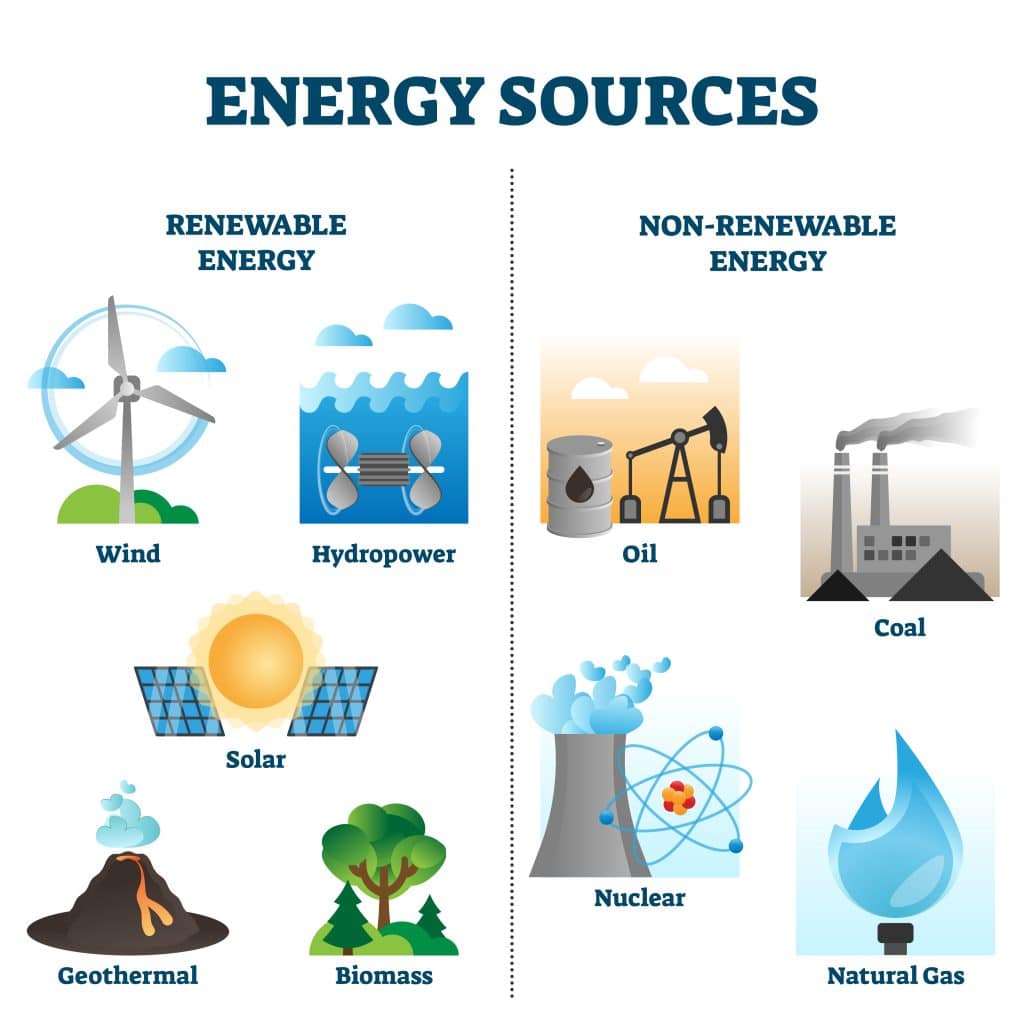Section 3: Renewable & Nonrenewable Resources

Ecologists understand that conservation is essential to protect and prevent the destruction of living and nonliving things. Sustainable development is necessary for preserving ecosystems. A renewable resource is a resource that can be regenerated or replaced. They are not necessarily unlimited and can quickly become limited by overuse. For example, trees and water are renewable resources but must be taken care of. A nonrenewable resource is a resource that cannot be replenished by natural processes, for example, fossil fuels, coal, oil, and natural gas. They cannot be replaced as quickly as they’re used.
Sustainable development uses natural resources without depleting them or causing long-term environmental harm. For example, the soil is a renewable resource that supports growth and needs to be protected. When land is plowed, it can remove roots that hold the soil in place. This can cause soil erosion, which is soil removal by wind or water. When soil is eroded, nutrient-rich topsoil is depleted and turns once-productive areas into the desert. Contour plowing helps reduce erosion, leaving stems and roots in place. Rotating crops can also prevent erosion and nutrient loss.
Deforestation can also hurt soil quality. It leads to severe soil erosion, which prevents the growth of trees. Old-growth forests take centuries to grow back, and logging causes species loss. The development of forest management and tree farms has helped with these problems. Trees can be replanted, which is good for the soil as well.
Human activities significantly affect the quality of the atmosphere and, therefore, the air we breathe. The air is constantly being polluted by pollutants such as smog. Smog is a haze formed from automobile exhausts and industrial emissions. The burning of fossil fuels also releases pollutants, causing health problems long after exposure. Today there are emission control standards and clean air regulations to help improve air quality. The invention of electric cars also helps in reducing emissions. Pollution also threatens our fresh water supply. Improperly discarded chemicals and pollutants at landfills seep into the groundwater, causing contamination. Water conservation and water treatment plants were established to help sustain, clean, and protect our water supply.
Commercial fishing is catching fish and other seafood for commercial profit. The industrialization of the fishing industry and the increasing world demand for seafood have people taking more fish from oceans, lakes, and rivers than is sustainable. As a result, species began to shrink rapidly. The sustainability of fisheries is improved by using specific equipment that eliminates or minimizes bycatch or catching non-target species. In addition, guidelines for commercial fishing were put into place, as well as aquaculture, which is raising fish to eat.
Review:
- What is sustainable development?
- Compare renewable and nonrenewable resources.
- What are the major sources of air pollution?
